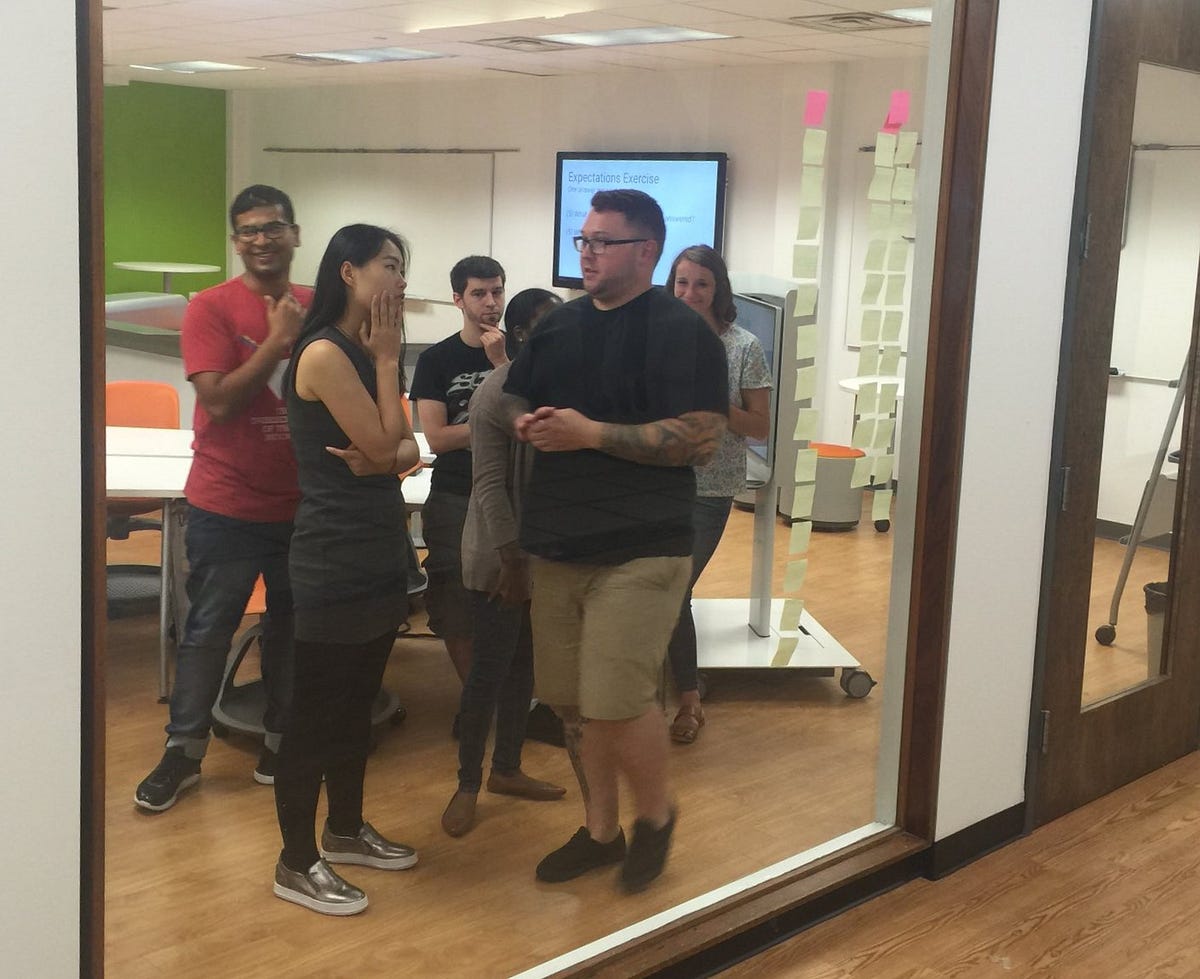Editor’s note: This post was originally published on Medium. We welcome Talisha to The Interconnected and thank her for being willing to republish her article here!

This past Monday, in my Digital Experience Design class, we were completing a group exercise. As students, we were collaborating to create an affinity diagram based on what we hoped to learn in the class this semester. Since I had previous taken a class with the professor, I knew this was the goal. However, the rest of my classmates did not. To them, we were just following the professors instructions of putting ideas on sticky notes and figuring out the best way to implement structure and hierarchy in a way that pleased the professor.
At one point a classmate said something along the lines of… I don’t know what to do, as I don’t know what the outcome should be, what is the purpose of this exercise? Immediately that struck a cord with me as I had the same thoughts only two semesters prior. I played along and didn’t share with the others what I knew. Then another classmate asked the professor how he wanted us to implement the structure. To which the professor called on me to answer that student’s question; essentially revealing that I understood something they did not.
At that moment I came to a realization.
I’ve been interested and learning about User Experience Design(UX) since around 2012. I have a good foundation of what UX is, the reasoning behind it, the power and impact it has and how it has been changing over the years. Despite this, I am still a beginner or at least am perceived as such. If you asked me to explain what I do, the way I articulate this, would not sound like someone who has been at it since 2012. You might be wondering how can that be when your acquisition of knowledge has been over 4 years in the making? Well, it’s quite simple.
I had not been regularly practicing or speaking to what I know.
If I had been applying and sharing my knowledge about UX every day for the past 4 years I might be considered a mid level designer at this point.
So what does that have to do with learning UX?
I have found that one of the best ways to learn and practice any skill is to teach it! You don’t have to be an expert nor do you need to have a degree to be a teacher. You just have to know more than the next person. Maybe, you don’t even have to know more, just know something that the next person does not. In class that day, I was no expert. My classmates are for the most part, on the same level professionally as I am. For that brief moment, the professor called on me to share my knowledge from a previous class with my peers. It was something small, but I taught them something that they will need to remember and practice themselves throughout the rest of the course. In this way I was able to practice my knowledge and articulate it. The fact that I did this will help solidify that concept for me to refer to in the future.
Learning also comes with being self-aware when you share your knowledge. You may not say things exactly right when you teach them to someone for the first time. However, being aware of this will help you improve it for the next time. So get out there and share knowledge as you are learning. Teach others as often as you can*. I will be doing the same. In this way you can add value and as a result start to be perceived as an expert in some area. Being able to clearly communicate what you do will also help to get your new career in UX moving.
*Don’t be arrogant. Apply your knowledge where appropriate or when asked. Don’t force yourself into a conversation to try to impress and seem like an expert. Be humble and add value where you can. Honey attracts more bees than vinegar.
Good luck!
